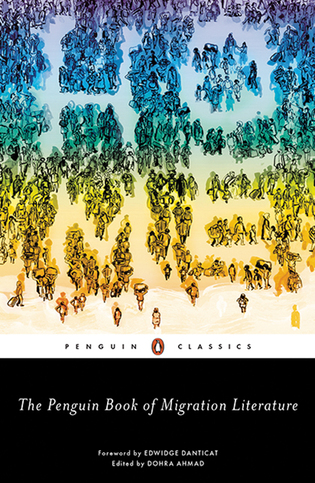 loading
loading
Reviews: January/February 2020 View full imageThe Penguin Book of Migration Literature Writer Sibongile Sithe is a Stanford Stegner Fellow.
Not everyone gets to write beautifully about the trauma of leaving home. But in creating what Penguin says is the “first global anthology of migration literature,” editor Dohra Ahmad ’93 has selected some real stunners, including the piece quoted above, which follows a group of mail-order brides en route to the United States. Given our global conversations about borders—how they are conjured, challenged, changed, and, nowadays, washed away—as well as patterns of human movement, Ahmad’s nuanced and well-considered introduction is worth your time. In it, she explains her choice of the term “migration” (rather than “immigration”) literature, her desire to present stories of voluntary and involuntary journeys, and her resistance to narratives of acculturation, in which migrants’ pre-journey lives are so rarely given the weight and attention they deserve. Engaging with a breadth of form, the collection moves among essay, fiction, poetry, and even the graphic novel. We are treated to treasures like Edwidge Danticat’s “Children of the Sea,” told in letters between two young unnamed Haitians. We find ourselves in the wake of a failed uprising; one of the letter writers, a young woman, watches the police violently harassing her neighbors, ostensibly looking for instigators. Her beloved, an activist who’s managed to escape the country, writes to her from a leaking boat bound for Miami. Equally wrenching is E. R. Braithwaite’s essay about becoming a schoolteacher—despite his training as an engineer—after serving in the Royal Air Force during World War II. And the entire book is worth buying for Warsan Shire’s blistering, four-paragraph essay “Conversations about Home (at the Deportation Centre).” But fear not, the collection is not without humor. In Mohsin Hamid’s How to Get Filthy Rich in Rising Asia, a husband explains to his wife that he cannot move their family from their village to the city because his roommate—the driver of the family for whom he works—is a “masturbating, chain-smoking, flatulent sisterfucker.” In Marina Lewycka’s Strawberry Fields, Irina, the young Ukrainian protagonist, assures her mother that leaving home goes wrong only for “stupid and uneducated” girls. Moments later, she is functionally kidnapped upon her arrival in England. As her guide/trafficker confiscates her passport and pushes her into a slick black-and-chrome vehicle, she laments not her circumstances, but his thuggish aesthetic choices. With the self-assuredness that only youth and classism can bring, Irina observes that his vehicle is a “typical mafia-machine,” the kind of car “popular with primitive types and social undesirables.” For those looking to engage with a diverse group of storytellers and begin to understand common aspects of the migrant experience, Ahmad has put together an excellent overview. However, readers looking for a new facet of the topic may find the collection a touch lacking. In her introduction Ahmad writes that she hopes the selected pieces will “counter the primacy of the United States in the rhetorical landscape of global migration,” but the anthology still has a decidedly Western bent, with the vast majority of the narratives documenting journeys to Western Europe and North America. Which is not to say Ahmad doesn’t try. Excellent exceptions include Mohsin Hamid’s description of a family’s move from rural Pakistani village to bustling city, and Shani Mootoo’s “Out on Main Street,” which takes us into the lives of a Hindu family living in Port of Spain. The few others, however, are lackluster by comparison. Their inclusion feels more like Ahmad attempting to tick all the boxes of location, conflict, and form (South Pacific, Syria, list-as-narrative) rather than a showcase of exemplary works of literature. Nevertheless, Ahmad has succeeded in creating a collection that both showcases the diversity of migrant experiences and highlights the commonalities of dislocation. It is an anthology that is unflinching and hopeful; that is necessary and timely.
The comment period has expired.
|
|